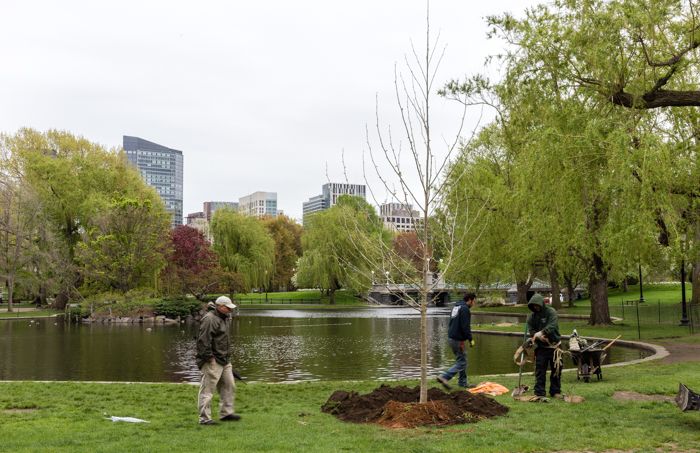
The sycamore, native to North America, is an easily recognizable deciduous tree because of its many distinctive features. They are large trees ranging in height from 60 to 100 feet with thick trunks and produce golf-ball sized seed clusters completely covered in tiny, fuzzy spikes. The distinguishing patchy bark is cream, light green, and brown and flakes off in irregular masses leaving the surface mottled. The bark of all trees accommodates growth by stretching, splitting or infilling and the sycamore shows this process more openly than many other trees. This is because the sycamore bark tissue has a rigid texture which lacks the elasticity of the bark of many trees, and because is in unable to stretch to adjust to the growth of the wood underneath, the tree sloughs it off.
As a fast-growing tree, with a thick canopy which provides lots of shade, it is popular for residential landscaping. They were once popular as street trees and can still be seen in older suburban neighborhoods. In the fall the large, bright green leaves turn gold, then wither before falling. The flowers are small and appear in April and May in dense clusters emerging from stalks that grow with the leaves.
It is said that during the Revolutionary War, a 168-year-old sycamore sheltered large groups of American soldiers during the ill-fated 1777 Battle of Brandywine in Pennsylvania. The hard, medium-weight wood was used by Native Americans for dugout canoes and, since the trunks of very large trees were often hollow, they provided protection from the elements. Because the wood is sturdy but easily worked, it has been used for furniture and paneling. Its trunk and large leafy branches make it a popular home for small mammals and birds. Sponsors for this tree are Ruth and Joel Jacobson.

